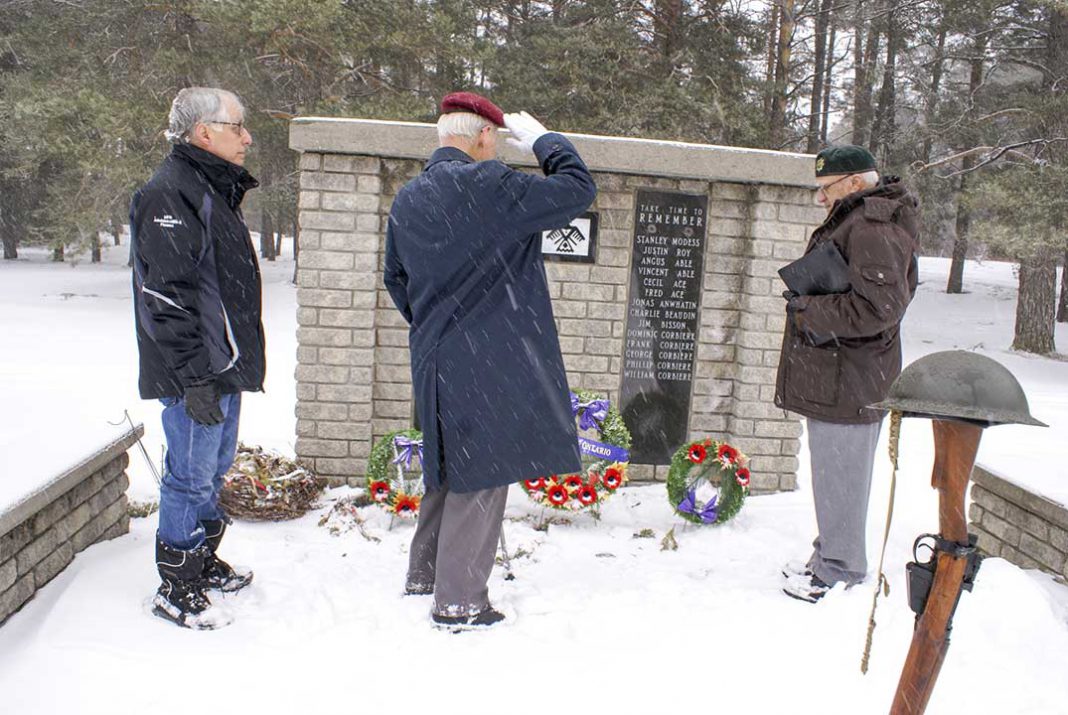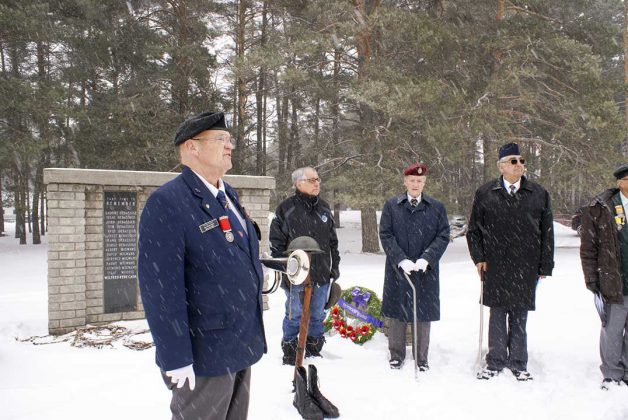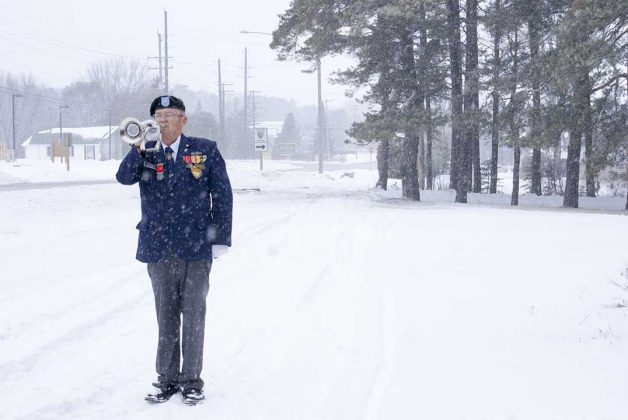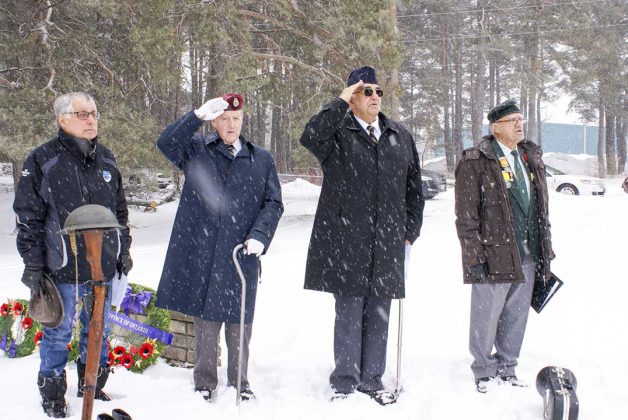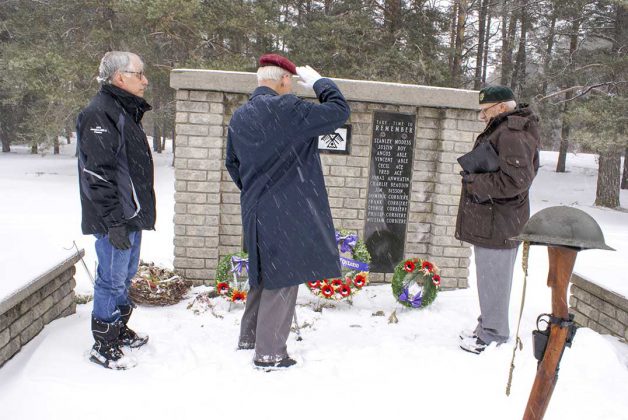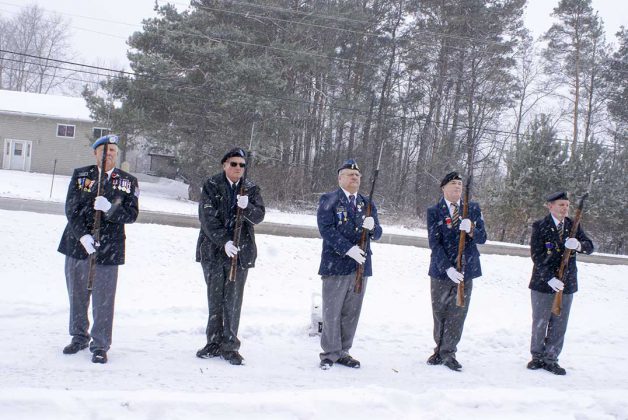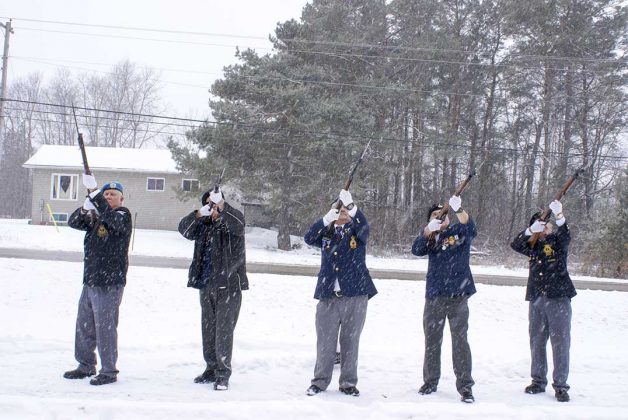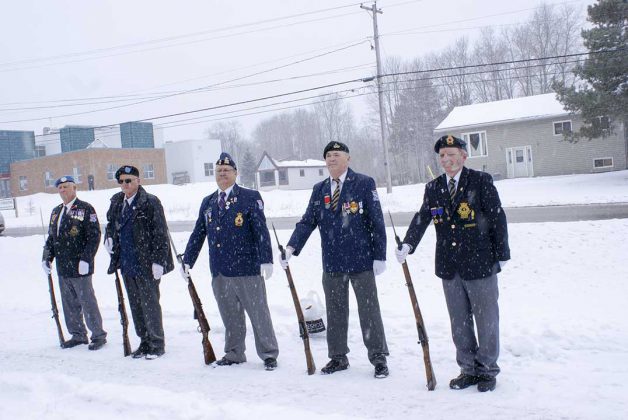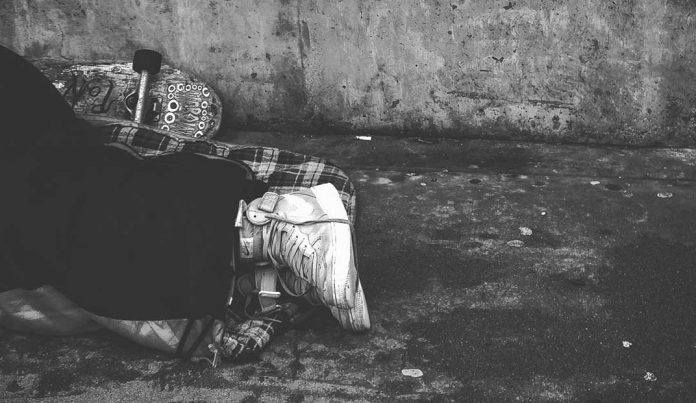M’CHIGEENG–The Battle of Vimy Ridge (April 9-12, 1917) is celebrated as one of the key milestones in Canada’s coming of age as a nation. By the spring of 1917 millions had died. The western front of World War I was comprised of almost entirely trench warfare, which created a horrific situation and was the first major conflict that involved machine guns.
The French had tried unsuccessfully numerous times to overcome the German position on Vimy Ridge, losing 100,000 casualties in the process. The Germans had held the Ridge since early in the war. At nearly seven kilometres long, Vimy Ridge dominated the landscape, and this position had given the Germans a commanding view over allied terrain.
“Vimy Ridge was the first time the four Canadian divisions fought together as a unified force,” explained Reverend Red Butler. Canadian leadership had been fighting during the entire war to keep Canadian troops together. The British wanted to break them up and send them to reinforce British troops, considering the Canadians as second rate troops.
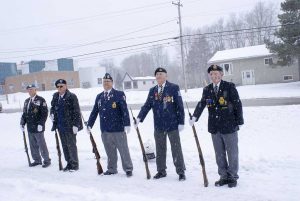
photo by Lori Thompson
It was Canadian ingenuity that paved the way for victory, and forever changed how Canadian troops were viewed, progressing from an undisciplined rabble to an elite force utilized by the British in several subsequent battles. As a result of the extensive planning and thinking, three of four Canadian divisions took the Ridge. There were 3,598 Canadian casualties.
The Battle of Vimy Ridge was highly symbolic for the allies because of its success. The victory was key in further crumbling German morale at the time. Without the planning and strategic thinking there would likely have been more casualties. It was certainly a turning point in the war.
A group of veterans and Royal Canadian Legion members gathered at the M’Chigeeng cenotaph on Friday, April 6 to celebrate the victory and commemorate those who lost their lives.
Rev. Butler opened the ceremony with a prayer, expressing thanks “for this freedom that we enjoy and to acknowledge those who made the ultimate sacrifice.”
Terry Debassige spoke on behalf of M’Chigeeng First Nation. “We are very grateful to you gentlemen for honouring our veterans,” he said. Mr. Debassige stood in for M’Chigeeng’s chief and council, who were not yet sworn in. He read off some of the names on the cenotaph. “There’s David Debassige who was severely wounded after the battle. He went over with the 114th, which was an all-Native battalion. They were broken up in England and sent to various others as reinforcements. There’s Isadore Duncan, who lost a leg, and Issac Debassige, also with the 114th Division. John Debassige was with the Royal Hamilton Light Infantry. Others who went off and didn’t come back are Tom Debassige, 114th Division. Ernest Debasssige, Frank Debassige, George Debassige, Albert Migwans, David Migwans, Laurence Migwans, Paddy Migwans, Raymond Migwans, Issac Modess, Stanley Modess, Justin Roy, Angus Able, Vincent Able, Cecil Ace, Fred Ace, Jonas Anwhatin Charlie Beaudin, Jim Bisson, Dominic Corbiere, Frank Corbiere, George Corbiere, Phillip Corbiere, William Corbiere, and Wilfred Rene Cada, who fought in Korea. Chi miigwech.”
Rev. Butler spoke about the battle. “The ridge that they were attacking was seven kilometres long, not a small thing. Just imagine being there, the dangers they faced,” he said. “There were machine guns, trenches, and the Germans were hiding in caves throughout the Ridge. Vimy Ridge is where Canada came of age, where Canada became a unified country. By the time the Canadians arrived France had lost 100,000 casualties. There was a lot of bravery and a lot of sacrifice that took place. That’s what Canada is all about. That’s where Canada came of age, when they took Vimy Ridge.”
There was a reading of In Flanders Fields and a laying of wreaths at the base of the cenotaph, followed by a salute from the Sergeant Charles Golden Silver Star Veterans Rifle Team. Sergeant Wayne Golden played Taps and The Last Post on his bugle, commemorating both Canadian and American veterans.
MPP Michael Mantha was tending to his duties at Queen’s Park on this day but did provide a written message. “The Battle of Vimy Ridge is known as Canada’s most celebrated military victory as it solidified and showcased this nation’s courage, leadership and belief in doing what is right. Canadians had experienced many times of solidarity and pride with one another prior to this battle; however, Vimy Ridge became a real symbol for what the people within these borders can achieve and that they could do it as its own unit. This is why the Battle of Vimy Ridge is known as the ‘birth of a nation,’ and that is something to be proud of,” wrote Mr. Mantha.
“Though it is important to remember the triumphs from this historic victory, we cannot forget the 60,000 brave soldiers that gave the ultimate sacrifice – 3,598 from the Battle of Vimy Ridge alone. Without their strength and passion, the multiple gains accomplished would not have been possible. We must also remember, honour and recognize the many Indigenous soldiers who fought in these battles. These ceremonies of remembrance are great opportunities to reflect on all different fronts of solidarity, unity and respect, which continues to be true today,” continued Mr. Mantha.
“To the people who continue to ensure these stories continue to be shared and honoured 101 years later – thank you. The work you continue to do to pay tribute has not gone unnoticed and it gives your community new opportunities to learn and pay homage to people, narratives and events that otherwise may not have been known,” concluded Mr. Mantha.
April 9 of each year is designated as Vimy Ridge Day thanks to former Algoma-Manitoulin MP Brent St. Denis. Mr. St. Denis’ private member’s bill, C-227, received Royal Assent on April 3, 2003 following several years of effort. Also with the passage of this bill the flag on Parliament Hill’s Peace Tower will be flown at half-mast every April 9 in commemoration of the Battle of Vimy Ridge.
A press release by Mr. St. Denis at the time stated, “It is not a holiday but a national heritage day to commemorate one of the most significant battles in Canadian military history.”

